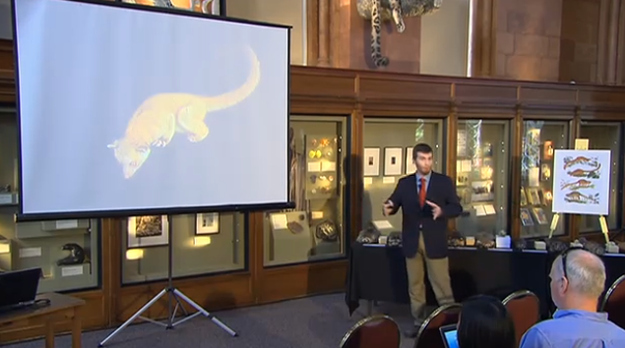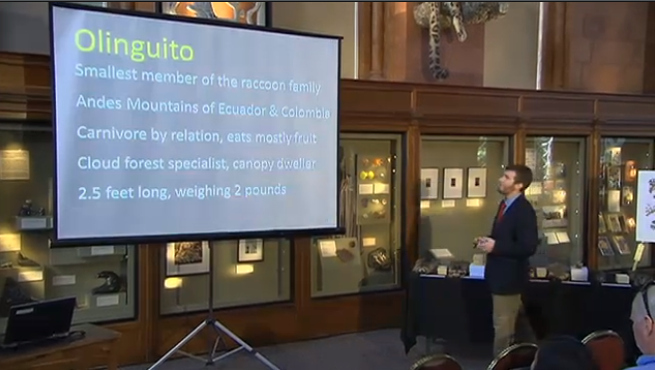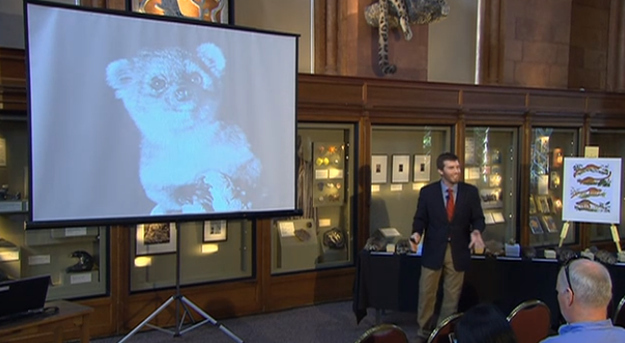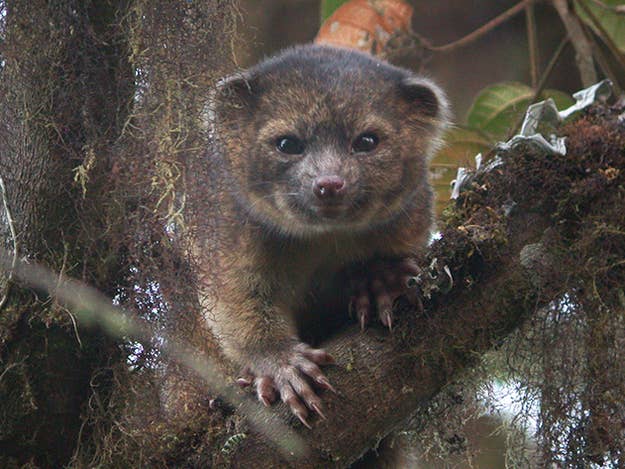
High in the canopy of the Andes Mountains in Colombia and Ecuador, the olinguito, a tiny creature that looks like a cross between "a house cat and a teddy bear" has been hiding unbeknownst to scientists and locals alike. The olinguito marks the first new carnivorous mammal discovery since 1978.
The olinguito (pronounced oh-lin-GHEE-toe) has woolly orange-brown fur, weighs only 2 pounds, and is only active at night.
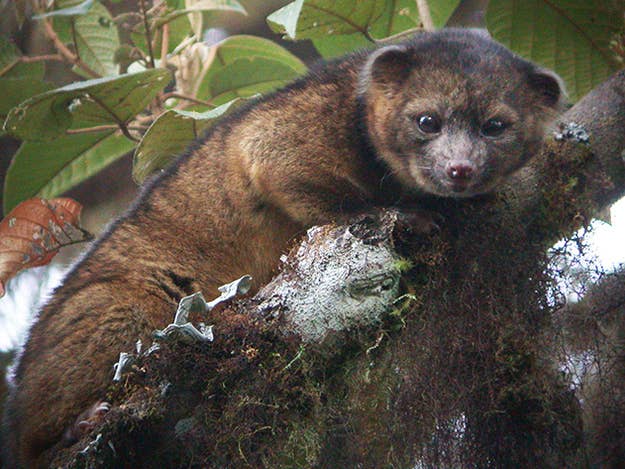
On Thursday in Washington, Kristofer Helgen, curator of mammals at the Smithsonian National Museum of Natural History, presented anatomical and DNA evidence to confirm the olinguito as the newest mammal species. Despite its bear/cat appearance, the olinguito is actually the smallest member of the the Procyonidae family, which includes raccoons, coatis, kinkajous, and olingos.
The olinguito is distinct from the olingo, which is another known carnivorous tree-dwelling creature from Central and South America, but it is so similar in nature that it was misidentified as an onligo for years.
At least one olinguito has lived in American zoos, but it was never correctly classified.
In the 1970s an olinguito named Ringerl, who was thought to be an olingo, moved throughout the United States before eventually dying in New York City's Bronx Zoo.
When Helgen asked why the animal traveled so much, the zoologist responded, "She wouldn't mate with the other olingos."
"Of course not," Helgen said today. "It was a completely different species."
Helgen began investigating the new species after uncovering unusual olingo skins and skulls of in the Chicago Field Museum. He identified them as distinct from other olingo specimens, and put together a team to investigate; experts in trapping olingos, South American scientists familiar with local rain forests, and his wife, also a Smithsonian zoologist, all helped in unveiling the olinguito.
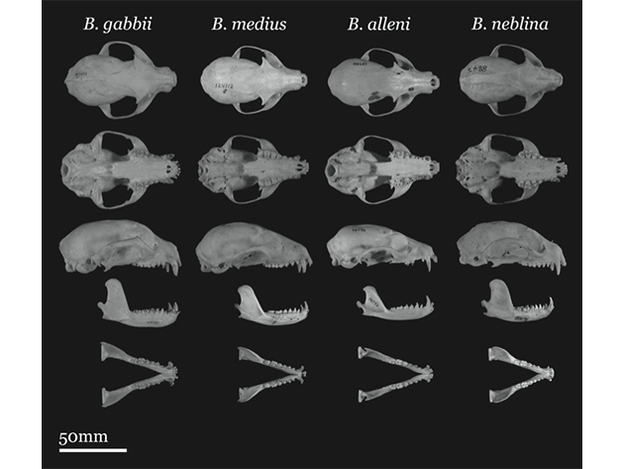
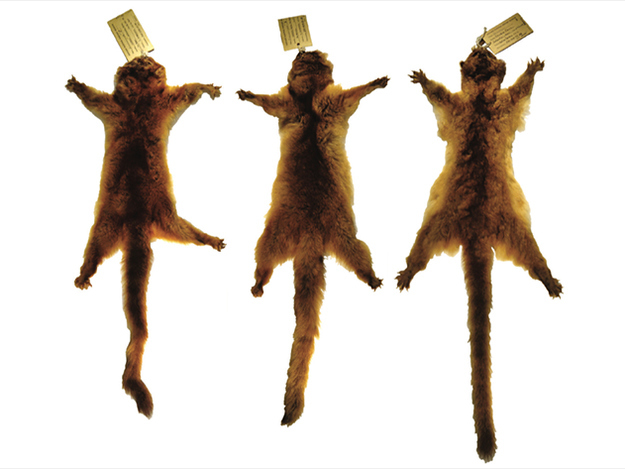
After studying the creatures in their natural habitat, Helgen and his team found that they are rather antisocial animals that live in what are known as "cloud forests" — forests so high that they are engulfed by clouds.
"We hope that by getting people excited about a new and charismatic animal, we can call attention to these cloud forest habitats," Helgen said.
Unearthing other mysteries of the rainforest require leaving these habitats unharmed.
"Deforestation is their biggest threat," said Helgen. What used to be cloud forests are now urbanized, or converted to agriculture. "Only one-third of the habitats they would use are still out there," he said.
The new species will not be classified as endangered, as Helgen believes that there are thousands of olinguitos distributed throughout the mountains of Colombia and Ecuador.
The scientist claims that he has other species "on the back burner," but is still determined to find more information about the mysterious olinguito.
"The discovery of the olinguito shows us that the world is not yet completely explored," said Helgen. "Its most basic secrets, not yet revealed."
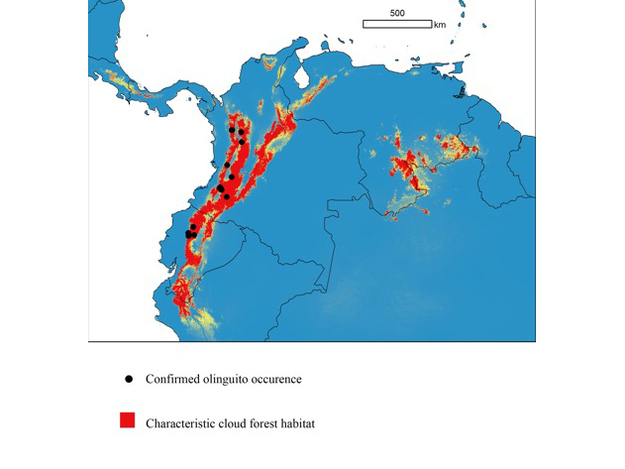
Update - Aug. 15, 1:05 p.m., EDT:
After today's press conference, the Smithsonian displayed this adorable stuffed animal olinguito.
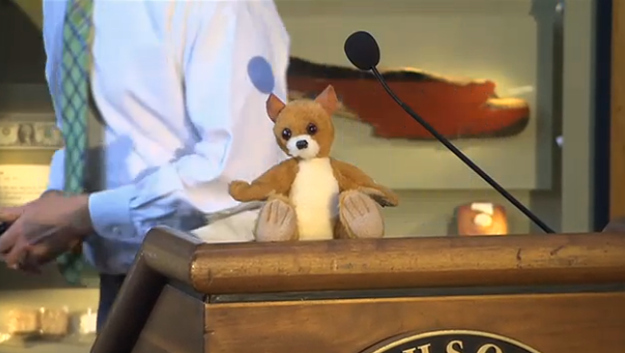
And more pictures from today's presentation by Kristofer Helgen:
